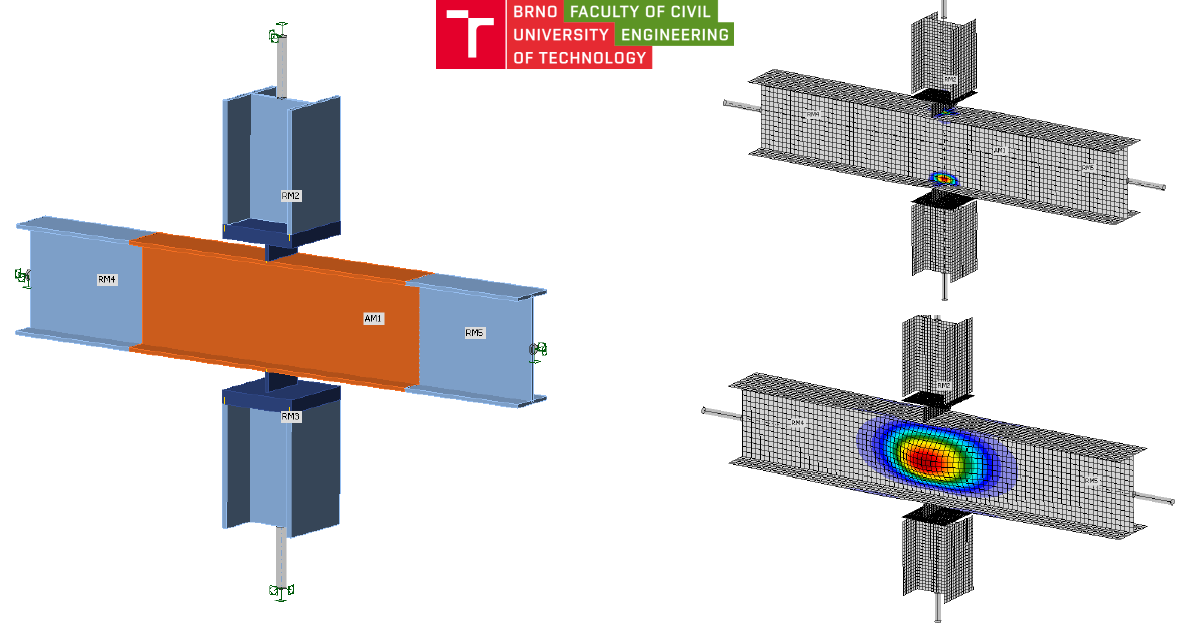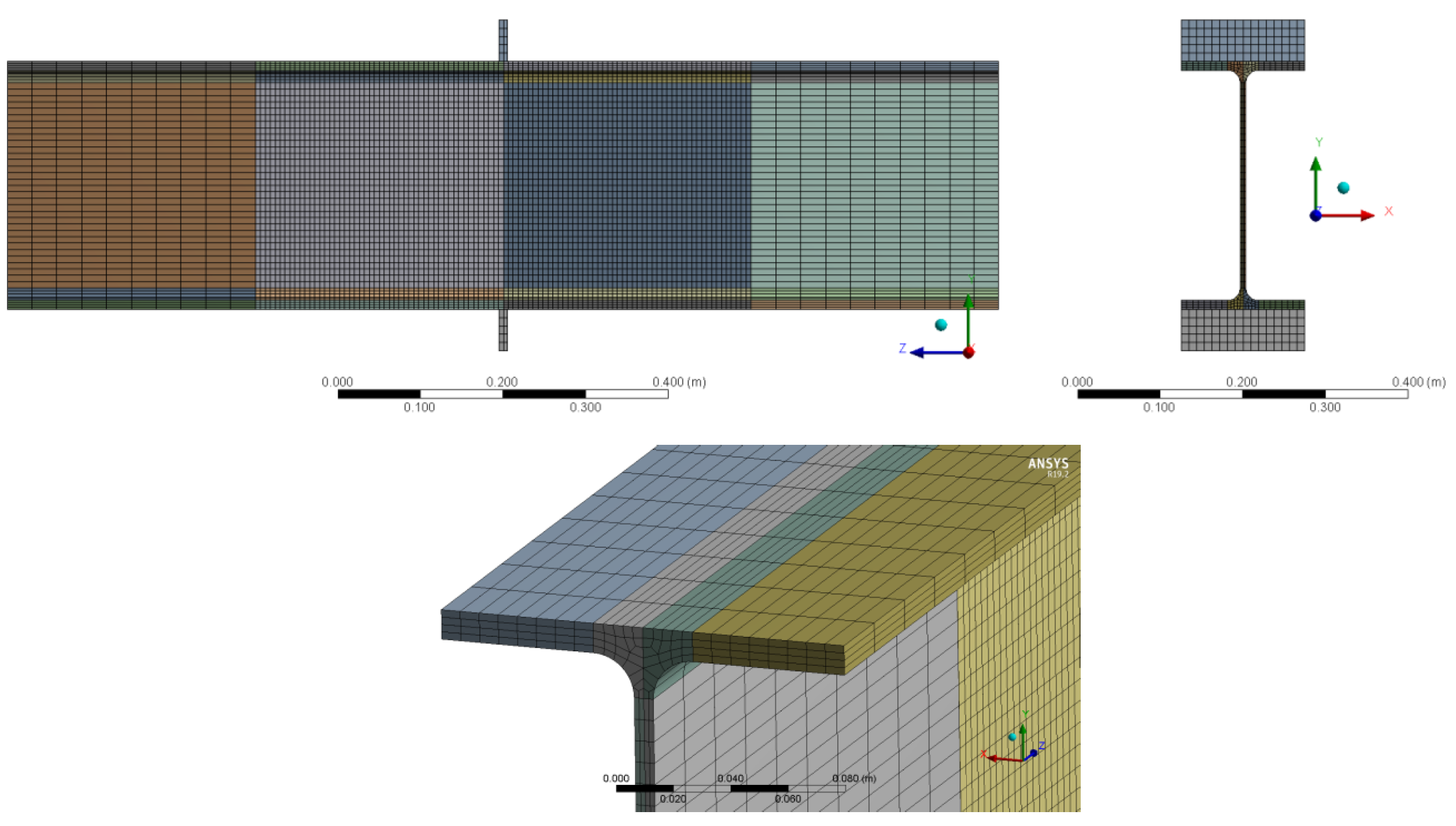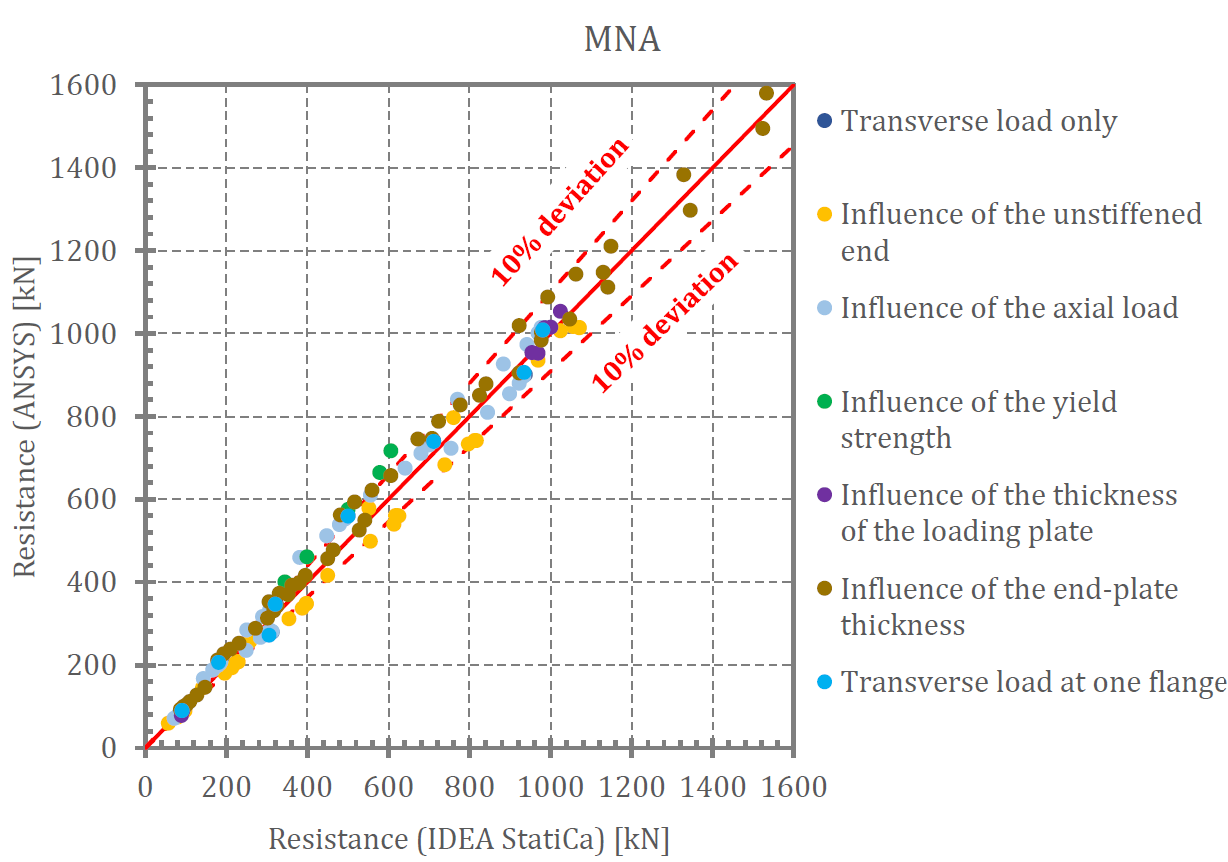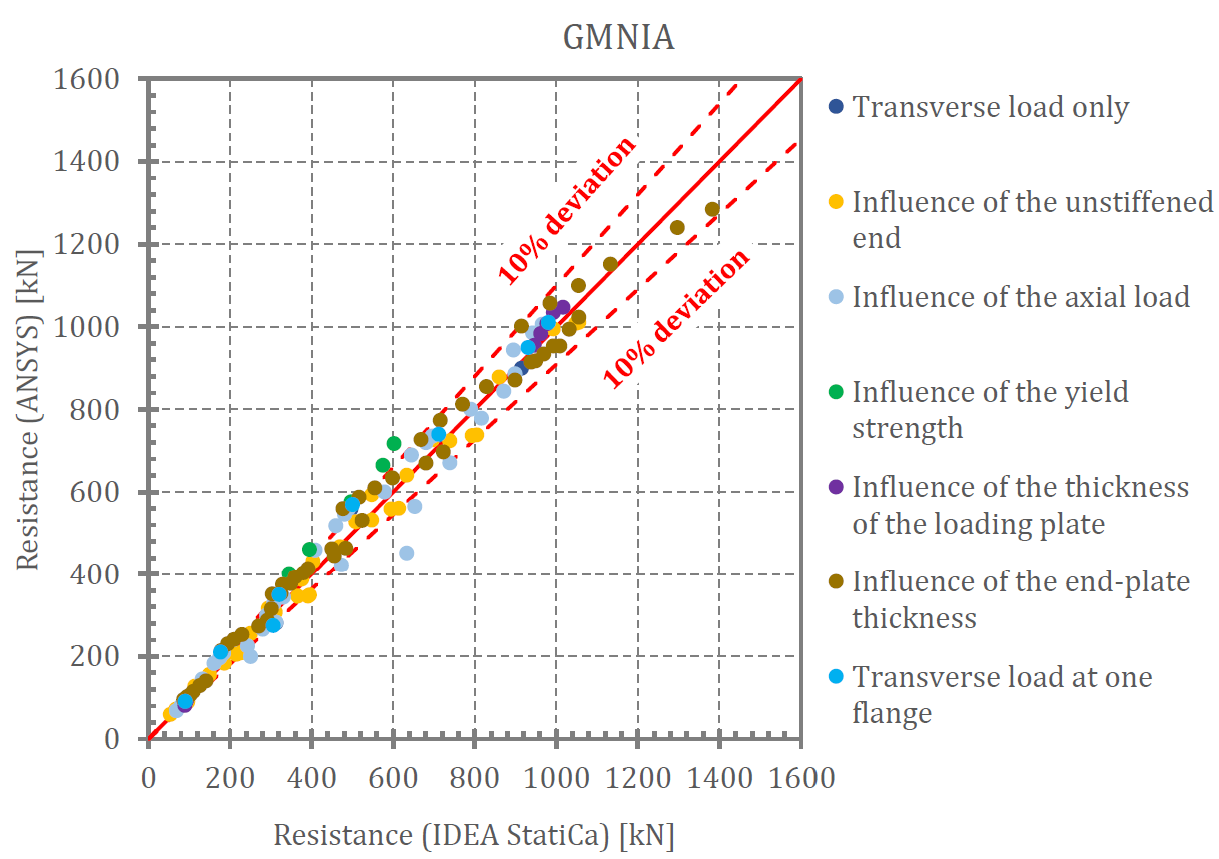Exemplu de verificare
Web in transverse compression
This work prepared at Brno University of Technology compares the results of IDEA StatiCa Member (MNA, LBA, GMNIA), ANSYS (MNA, LBA, GMNIA), Eurocode and AISC 360 for component Web in transverse compression.
The component Web in transverse compression is investigated in detail. In Eurocode, it is included in several locations:
- EN 1993-1-8, Cl. 6.2.6.2
- EN 1993-1-5, Cl. 6
In AISC 360-22, there are clauses for web local yielding in J.10.2, web local crippling in J.10.3, and web compression buckling in J.10.5.
Web sideways buckling is assumed to be structurally restrained and is not investigated here.
Significant differences were found between analytical solutions themselves and even bigger between analytical and numerical results. The results of GMNIA with a validated ANSYS model composed of solid finite elements are considered to be closest to reality.
Several cases are investigated, namely the influence of:
- yield strength
- imperfection amplitude
- thickness of loading plates
- fillets between the web and flange
- unstiffened end
- normal force in transversally compressed member
- end-plate thickness, through which the transverse compressive load is imposed
- transverse load at only one flange
The main findings are:
- Buckling occurs much later than assumed in codes.
- Buckling factor 3 from LBA is a suitable limit. The resistances determined by GMNIA are not lower than 95% of MNA resistances for the vast majority of cases for LBA factor higher than 3.
- The resistance of welded sections in codes seems to be underestimated.
- The most appropriate mesh is the web divided into 12 elements. The IDEA StatiCa shell model corresponds to ANSYS solid models with fine mesh with sufficient accuracy.
| Parameter | MNA | GMNIA |
| Minimum | 0.83 | 0.83 |
| Maximum | 1.15 | 1.4 |
| Average value | 0.98 | 0.98 |
| Standard deviation | 0.08 | 0.08 |
Read the full report in the attached PDF:
Fișiere atașate
- Web in transverse compression.pdf (PDF, 3,8 MB)





